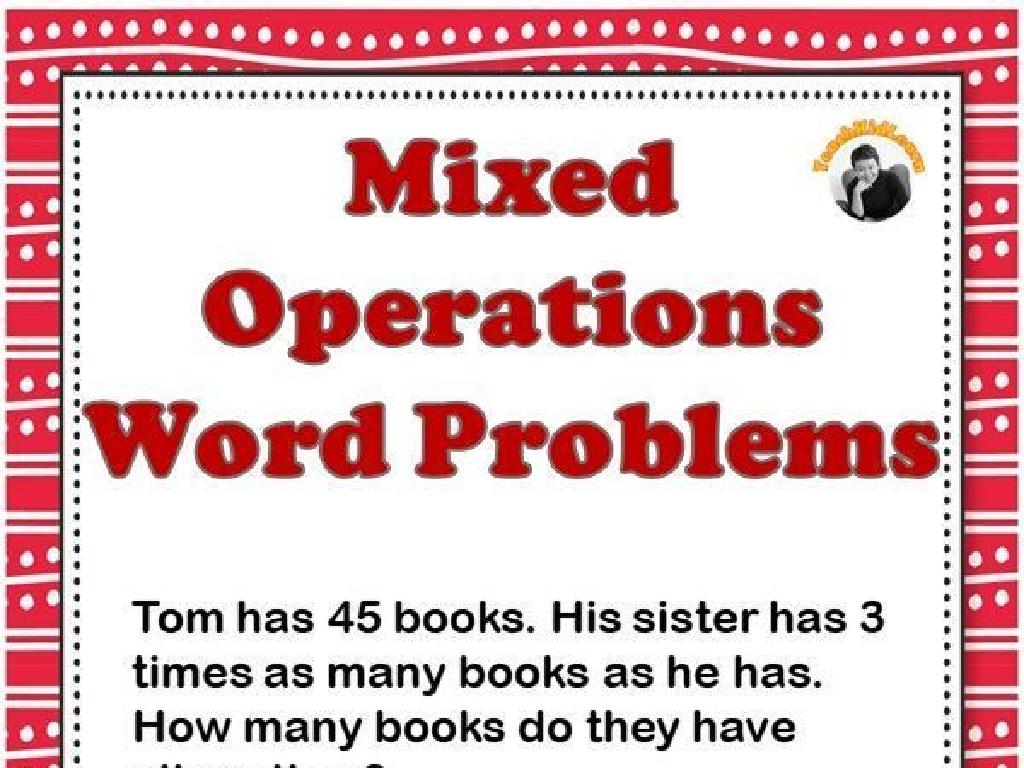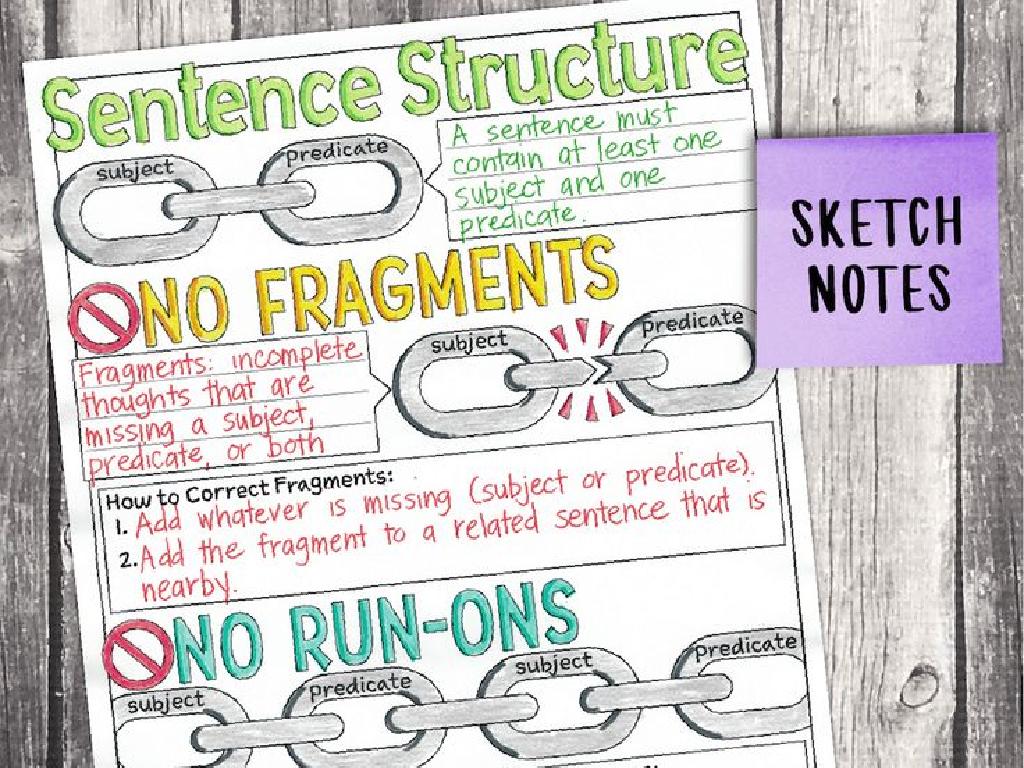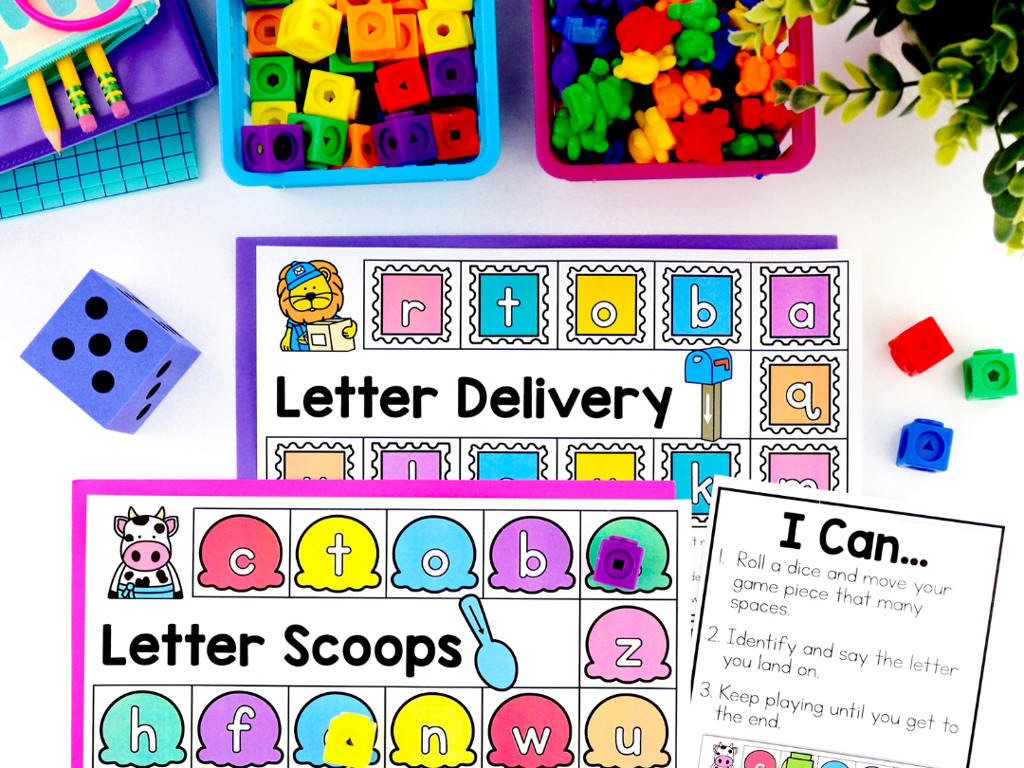Compare Properties Of Objects
Subject: Science
Grade: First grade
Topic: Materials
Please LOG IN to download the presentation. Access is available to registered users only.
View More Content
Exploring Materials and Their Properties
– Learn about different materials
– Compare material properties
– Hardness, flexibility, color, and use
– Discover what objects are made of
– Materials like wood, plastic, metal, and fabric
– Engage with everyday examples
– Classroom items: wooden desk, plastic ruler, metal scissors
|
This slide introduces students to the concept of materials and their various properties. Start by discussing common materials such as wood, plastic, metal, and fabric. Explain that materials have different properties like hardness, flexibility, and color, which determine their use. Engage students by asking them to look around the classroom and identify objects made of these materials. For example, a desk is often made of wood, a ruler might be made of plastic, and scissors typically have metal blades. Encourage students to touch and feel the objects to understand their properties better. This activity will help them grasp the idea that the properties of materials are important in deciding their purpose and function.
Exploring Materials and Their Properties
– What are materials?
– Everything is made from materials like metal or fabric.
– Common materials we use
– Metal, wood, plastic, glass, and fabric are around us.
– Materials have different properties
– Hardness, flexibility, color, and texture vary by material.
– Why properties matter?
|
This slide introduces the concept of materials to first graders, explaining that everything they see and use is made from some type of material. Start by asking students to look around and name objects they see, then discuss what materials those objects might be made from. Highlight the common materials such as metal, wood, plastic, glass, and fabric, and discuss their different properties like hardness, flexibility, color, and texture. Explain that these properties help us decide which material is best for making certain objects. For example, why glass is good for windows, or why plastic is used for toys. Encourage the students to think about why certain materials are used for specific objects and how the properties of the materials make them suitable for those uses.
Exploring Material Properties
– Properties describe materials
– Examples: hard, soft, heavy, light
– A pillow is soft, a rock is hard
– Transparent vs. opaque materials
– Glass is transparent, wood is opaque
– Touch and feel activity
– We’ll touch different objects to learn!
|
This slide introduces the concept of material properties to first graders. Properties are characteristics that help us describe and identify materials. Start by explaining simple properties such as hard and soft, heavy and light, and introduce the concepts of transparent (see-through) and opaque (not see-through). Use tangible examples that children are familiar with, like comparing a soft pillow to a hard rock, or explaining that glass is transparent while wood is opaque. The touch and feel activity is a hands-on experience where students can interact with various objects to understand their properties better. Encourage them to describe what they feel and see. This activity will help solidify their understanding of material properties in a fun and engaging way.
Comparing Hard and Soft Materials
– Hard materials are tough
– Like a rock, brick, or metal
– Soft materials are squishy
– Like a sponge, cotton, or pillow
– Think of more hard & soft items
– Classify objects by hardness
– Is a teddy bear hard or soft?
|
This slide is aimed at helping first-grade students understand the concept of hard and soft materials. Start by explaining that hard materials are tough and can’t be squished easily, using a rock as an example. Then, describe soft materials as squishy and easy to compress, like a sponge. Encourage the students to use their sense of touch to think of more examples of hard and soft things in their environment. Finally, engage the class in an activity where they classify various objects around the classroom or from a set collection into hard or soft categories. This will help them apply their understanding of the properties of materials in a practical and interactive way.
Heavy vs. Light Objects
– Understanding heavy objects
– Heavy objects like bricks are hard to lift
– Understanding light objects
– Light objects like feathers are easy to lift
– Weighing objects activity
– Feeling the weight difference
|
This slide introduces the concept of weight by comparing heavy and light objects. Start by explaining that some objects are harder to lift because they are heavy, like a brick, while others are easy to lift because they are light, like a feather. Set up a class activity where students can weigh different objects to feel the difference in weight. Provide a variety of objects for the students to handle and weigh, such as pencils, books, backpacks, and blocks. Encourage them to describe how each object feels and to guess if it’s heavy or light before weighing. This hands-on experience will help solidify their understanding of the concept of weight in a tangible and interactive way.
Transparent or Opaque?
– What is transparent?
– Materials you can see through, like a clear window.
– What is opaque?
– Materials you can’t see through, like a wooden door.
– Exploring light and materials
– Class activity: Light Play
– We’ll use flashlights to test different objects in class!
|
This slide introduces the concepts of transparency and opacity to first graders. Begin by explaining that transparent materials are those that allow light to pass through so that objects on the other side can be clearly seen. In contrast, opaque materials block light from passing through, preventing us from seeing what is on the other side. Use everyday examples to illustrate these properties, such as comparing a clear window (transparent) to a wooden door (opaque). The class activity involves using flashlights to shine light on various objects to determine if they are transparent or opaque. This hands-on activity will help solidify the concepts by allowing students to explore and discover the properties of materials themselves. Prepare a set of diverse objects for the activity, ensuring there are enough for small groups to engage with the experiment simultaneously.
Class Activity: Material Hunt
– Let’s explore materials in our room
– Find objects and decide their properties
– Are they hard or soft?
– Is the object squishy like a sponge or solid like a desk?
– Are they heavy or light, transparent or opaque?
– Can you see through it or is it solid colored?
|
This activity is designed to help students understand the properties of materials by exploring and interacting with objects in their immediate environment. Encourage the students to touch and feel the objects to determine if they are hard or soft. Ask them to try lifting objects to decide if they are heavy or light. Have them look at objects against the light to see if they are transparent or opaque. Provide guidance and ensure safety as they move around the classroom. Possible objects they might find include a sponge (soft), a book (hard), a pencil (light), a backpack (heavy), a window (transparent), and a door (opaque). After the hunt, facilitate a discussion where each student shares their findings with the class.
Material Hunt Recap
– Excellent work on material hunt
– Learned comparing object properties
– Hard, soft, heavy, light, and color are some properties we looked at.
– Properties guide material usage
– Knowing if something is hard or soft can tell us if it’s good for building or cushioning.
– Keep exploring materials around you!
|
This slide concludes our lesson on comparing the properties of objects. The students did a fantastic job during the material hunt activity, where they explored and compared the properties of various objects. It’s important for them to understand that these properties, such as hardness, weight, and color, inform us about the potential uses of each material. For example, hard materials might be used for construction, while softer materials could be used for comfort. Encourage the students to continue observing and thinking about the materials they interact with every day, fostering curiosity and understanding of the physical world.






